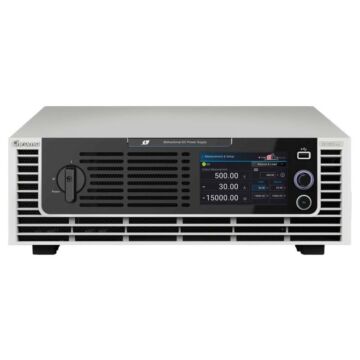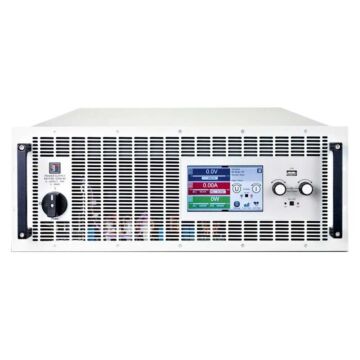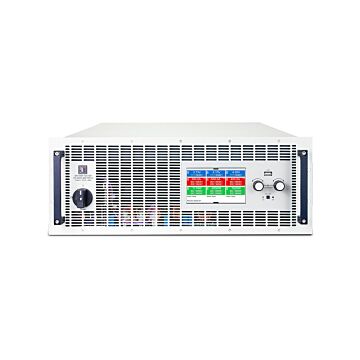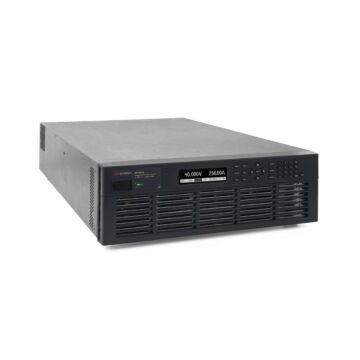
Electric vehicles (EVs) are rapidly gaining in popularity for their independence from fossil fuels and their environmental efficiency. They offer many advantages compared to vehicles with internal combustion engines but require powerful rechargeable batteries for their electric motors and other electronic systems. These batteries must withstand thousands of cycles of being recharged after, for example, discharging their energy during a drive. Rechargeable batteries that power EV electric motors are based on several chemistries and employ a wide range of architectures depending upon the vehicles they power.
Developers of EVs, their rechargeable batteries, and their on-board charging systems can analyze their characteristics and make them better with the help of bidirectional DC power supplies from Transcat | Axiom Rentals. These versatile instruments can source and sink electrical power over wide voltage ranges and can help better understand the impact of many charge and discharge cycles on EV rechargeable power batteries, across a wide range of conditions, to simulate real-world operation. They are invaluable tools for diagnosing EV rechargeable batteries and finding ways to enhance battery designs for extended operating lifetimes.
The rechargeable batteries that supply power to an EV’s electric motor represent considerable progress from traditional 12-V lead-acid batteries that help start a vehicle with an internal combustion engine. While a 12-V vehicle battery may need recharging when the lights have been left on too long, an EV’s battery system requires recharging on a regular basis, after every drive of significant distance.
As EVs gain in popularity, growing numbers of charging stations are being installed along roadways to replace discharged energy from an EV’s battery. Charging is assisted by a vehicle’s battery management system (BMS) software for minimal wear on the battery and safe conditions for the driver. Fast-charging systems can speed up the process, helping an EV’s battery system surpass 80% of its capacity in less than 30 minutes. But fast charging can generate unwanted heat in an EV’s battery, with excess heat shortening a battery’s operating lifetime


Powering Both Directions
Bidirectional power supplies function as both a source and a load, providing the capabilities to test EV batteries during charge/discharge cycles to better understand the short- and long-term effects of those cycles on battery health and performance. Batteries naturally lose charge capacity over time with wear and with use, and a bidirectional power supply can help mimic charge-discharge cycles to better understand aging effects. An EV battery may have constantly changing loads as it powers the electric motor and other electronic devices and may be required to perform in several operating modes, such as constant voltage (CV), constant current (CC), and constant power (CP) modes. A bidirectional power supply for testing EV batteries should also be capable of performing in those modes to simulate the EV’s operating environment.
Well-designed bidirectional power supplies are capable of high efficiency as well as regenerative operation in which the energy entering the power supply from a load, such as an EV battery during a discharge cycle, can be fed back to the electric power grid to conserve energy (and cost) during testing. As an example, the Chroma 62060D-100 Bidirectional DC Power Supply, a member of the company’s 62000DSeries, performs two-quadrant operation by providing positive current with positive voltage and negative current with positive voltage. Its regenerative operation feeds energy absorbed from a DC load back to the power grid with conversion efficiency as high as 93%. The power supply is capable of CV, CC, and CP operation.
The model 62060D-100 features a voltage source/sink range of 0 to 100 V and current range of ±180 A, with a power range of ±6000 W. As a power supply, line voltage is regulated within ±0.01% full scale (FS) with current regulation of ±0.05% FS while load regulation for voltage is within ±0.02% FS and for current is within ±0.1% FS. The bidirectional power supply is a powerful test instrument, and can measure voltage within maximum limits of 20 or 100 V and current within maximum limits of 36 or 180 A. The voltage measurement accuracy is 0.05% FS while the current measurement accuracy of 0.1% FS.
The Chroma 62060D-100 Bidirectional DC Power Supply features a user-friendly human-machine interface (HMI) for ease of use needed for EV battery testing. It is also fully programmable for automated testing, with setting and measuring resolution of 10 mV for voltage and 10 mA for current. Response time to programmed commands is less than 1.5 ms. The supply provides several digital interfaces to simplify computer connections, including Ethernet, GPIB, and USB interfaces.
The Keysight/Agilent RP7935A Regenerative DC Power Supply is a member of the RP7900 series of bidirectional power supplies, functions as a source or load. The highly regenerative instrument can return absorbed energy to the power grid with high efficiency. As a source, it ranges from 0 to 80 V with 0 to 250 A current and 0 to 10 kW total power. Voltage can be programmed within ±0.02% of 8 mV and current within ±0.03% of 25 mA for automatic test setups. It is well regulated as a load, with voltage within 3 mV and current within 25 mA.
For CC operation, the output ripple/noise of the RP7935A is 70 mA RMS or less while for CV operation, ripple is within 8 mV RMS. To protect operators and ease operation, the unit integrates several safety features as well as an autoranging function. And to facilitate EV battery testing, the bidirectional power supply provides an adjustable, programmable resistance range, to simulate the internal resistance of an EV battery, of 0 to 0.625 Ω. A battery’s efficiency decreases with its increasing internal resistance, allowing testers to experiment with efficiency conditions.
EA Elektro-Automatik, Inc. offers several battery testers suitable for EV battery testing, including the EA PSB10360-240 Bi-Directional DC Power Supply housed in a compact, 4U-high, 19-in. rack-mount enclosure. It provides a wide voltage range of 0 to 360 V with just 480 mV pp or 83 mV RMS noise or ripple and current from 0 to 240 A. Capable of as much as 30 kW output power, the supply features 94.6% efficiency. For lower voltages, the Elektro-Automatik BT20080-340 Triple Battery Tester offers a voltage range from 0 to 80 V with three channels in a 4U, 19-in. rack-mount enclosure. Ripple in CV mode is within 25 mV RMS and 320 mV pp. The battery tester has a current range of ±340 A per channel and power range of ±10 kW per channel. It is designed for CV, CC, and CP conditions.
For higher voltages, the Chroma 62180D-600 Bidirectional DC Power Supply, another member of the firm’s 620000 Series of bidirectional power supplies, provides programmable control of voltages from 0 to 600 V, currents of ±120 A, and as much as ±18 kW power. Line regulation is within ±0.01% FS for voltage and ±0.05% FS for current while load regulation is within ±0.02% FS for voltage and ±0.1% FS for current.
The NH Research 9200-4912 High-Power Battery Test System is a sizable test system designed with six channels for charge, discharge, and standby testing of batteries in CC, CV, and CP modes. It is capable of automated measurements from 0 to 120 V voltage with 0.1% + 0.1% programming accuracy, ±200 A current with 0.2% + 0.2% programming accuracy, and ±8 to 12 kW power with 0.4% + 0.4% programming accuracy. For all units of measure, values are shown with 0.005% resolution. The comprehensive test system provides charge/discharge testing with economy, with 87% typical efficiency in returning discharged power to the mains.
Additional information on these and other bidirectional power supplies can be found on www.transcat.com or by contacting a Transcat | Axiom representative at (800) 264-4059.






